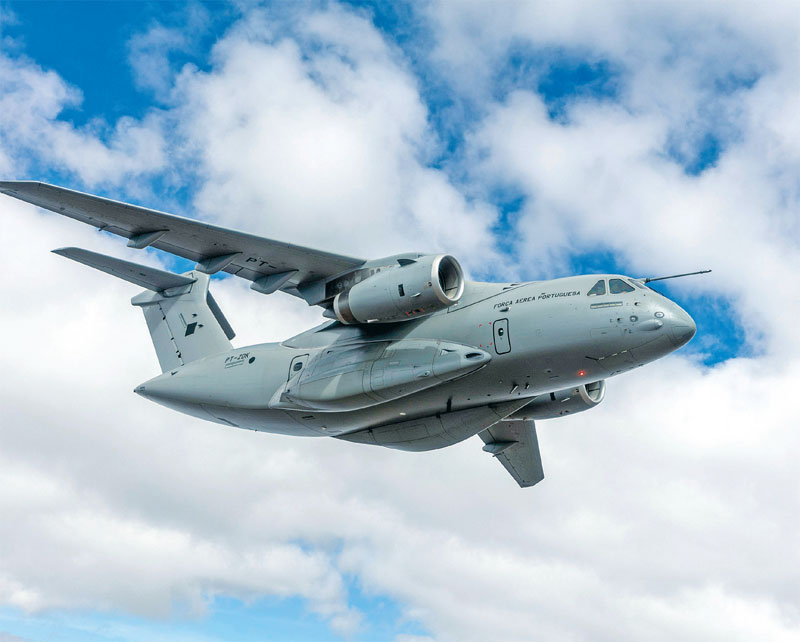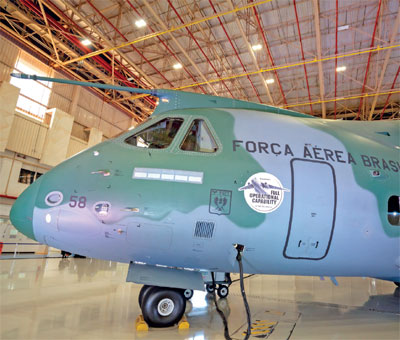Ukraine war disrupts supply of spares for air force’s fleet of existing Russian planes
Atul Chandra
Russia’s ongoing conflict with Ukraine has led to disruption in supply of spares and equipment to the Indian Air Force’s (IAF) transport fleet of Ilyushin IL-76 ‘Gajraj’ heavy transport and Antonov AN-32 ‘Sutlej’ medium transport aircraft. Both aircraft can be considered as the backbone of the IAF’s transport fleet and the already ageing fleet is now unlikely to remain in service for more than a decade. In addition to the IL-76 and AN-32, which are likely to be phased out by early 2030s, the IAF also operates three Western transport aircraft types in the Boeing C-17 Globemaster III, Lockheed Martin C-130J-30 and the 1960s vintage HS-748 ‘Avro’.

From the mid-2030s, the IAF will not have to operate any Russian transport plane and its future transport aircraft mix will feature its fleet of 11 C-17 strategic transport aircraft at the top end, the Medium Transport Aircraft (MTA) in the middle, followed by the C-130J-30 and the C-295 MW, which is the replacement for the HS-748 ‘Avro’ built under licence by the Hindustan Aeronautics Limited (HAL).
New Transport Type
Considering the inordinate delay in aircraft procurement for the IAF, the service has taken the well-advised move of pressing ahead with its requirement for a new MTA. In February, the IAF issued a requirement for a new MTA in the 18-30 tonne class. The air force has not specified an engine configuration, opening the door to both turboprop and turbofan powered aircraft. The RFI stated that the air force could acquire up to 80 of the new MTAs, which will also need to be produced under licence in India. Lockheed Martin and Embraer have both expressed interest in participating in the IAF tender.
Embraer showcased its contender, the C-390 Millennium military multi-mission tactical air transport aircraft at the Aero India 2023 in Bengaluru, where the aircraft was on static display. Embraer already has a foothold with the IAF as its ERJ-135 is operated for VVIP duties and the ERJ-145 is used as the platform for the Netra Airborne Early Warning & Control (AEW&C) platform. India is a key market for Embraer. Bosco da Costa Junior, President & CEO, Embraer Defence & Security, says the company is keen to establish partnerships in the country that can further boost India’s defence industries and capabilities. The C-390 can carry 26 tonnes of cargo compared to other medium-sized military cargo aircraft. It can also attain a top speed of 870 kmph.
The C-390 entered service with the Brazilian Air Force (FAB) in 2019. The FAB’s fleet of six KC-390s, all refuelling versions, have already accumulated more than 7,500 flying hours. In April, Embraer announced that the FAB’s C-390 fleet had achieved Final Operational Clearance (FOC). The sixth C-390 delivered by Embraer to the FAB was in FOC configuration and the five aircraft earlier delivered will be upgraded to FOC configuration over the next few years. Embraer also has orders for the C-390 Millennium from Portugal & Hungary, both NATO member nations. The Netherlands, anther NATO member, selected the C-390 Millennium in 2022 for its air force.
The IAF operates a fleet of 12 C-130J-30 Super Hercules transport aircraft, which have now been in service for over a decade. The aircraft were ordered in two batches, with the first order for six aircraft procured though the Foreign Military Sales (FMS) route from the US at an approximate cost of Rs 3,835.38 crore (USD 962 million). The first aircraft was inducted into service at the Hindon Air Force Station in February 2011. One C-130J was lost in a crash, 72 miles west of Gwalior airbase in March 2014.

The IAF’s C-130J-30S ere configured for special mission roles and feature a highly integrated and sophisticated configuration with an Infrared Detection Set (IDS), allowing the aircraft to perform precision low level flying, airdrops and landing in blackout conditions. The C-130J-30 is a stretch version of the C-130J and adds 15 feet to the fuselage, increasing usable space in the cargo compartment with space for two more pallets of equipment. The aircraft can carry a total of eight pallets or 97 litters or 24 CDS bundles or 128 combat troops or 92 paratroopers, or a combination of any of these up to the cargo compartment capacity or maximum allowable weight.
The C-130J has a 20 tonne maximum allowable payload and a range of 4,000 km with that payload. It can attain a cruise speed of 675 kmph. If the IAF decides on the C-130J-30 as its next MTA, it will benefit from the existing training and support infrastructure already existing. The C-130J has also proven ability to operate out of austere, high elevation airstrips in hot conditions and its four Rolls Royce AE2100 engines with Dowty six-bladed propellers provide sufficient power for operations in the most extreme environments.
One of the newest operators in the region of the C-130J-30 Super Hercules is the Indonesian Air Force, which took delivery of the first of five aircraft in February. Compared to older C-130s, the J model climbs faster and higher, flies farther at a higher cruise speed, and takes off and lands in a shorter distance. The C-130J is now in service with 26 operators in 22 nations and more than 520 C-130Js have been delivered. As per data provided on the USAF website, the cost of a C-130J was USD75.5 million as of FY 17.
Mighty Jet
The IAF’s 44 Squadron celebrated its diamond jubilee in April and it was this squadron which brought the IL-76 to India following which the aircraft was formally inducted into service in June 1985. 44 Squadron was raised on the Antonov AN-12 in 1961 and operated the giant Russian type till 1985. The squadron has been at the forefront of the airlift activities undertaken by the IAF and has been a part of all major military and HADR initiatives in recent history.

The IAF’s IL-76 fleet has been plagued by poor service, a matter further exacerbated by the ongoing Russia-Ukraine conflict and western sanctions on the former for starting the conflict. The IAF acquired 14 IL-76 MD aircraft between 1985-89 and its IL-78 mid-air refueller and A-50I AWACS are based on the same platform. Essentially an aircraft of mid-seventies technology, the IL-76, IL-78 and A-50I have likely become increasingly expensive to maintain and the disruption of the spares pipeline from Russia and surrounding countries mean that flight serviceability is likely to be poor. A 2017 CAG audit brought out that the average serviceability rate for the Il-76 and Il-78 fleets was 38 per cent and 49 per cent respectively between 2010 and 2016. It is unlikely the IAF will make an effort to modernise its IL-76 fleet as was once mooted and will look to retire them earlier than planned.
Missed Opportunity
The Indo-Russian Medium Transport Aircraft (MTA) project was to have been a co-design, co-development and co-production of effort jointly undertaken by Russian partners and the HAL. The MTA was being designed as a jet-powered aircraft in the 15-20 tonne category and would have been ready to enter service in the early 2020s.
The MTA would have been a modern multirole, twin-engine transport aircraft able to undertake cargo/ troop transport, paratrooping/ airdropping of supplies and was also to feature Low Altitude Parachute Extraction System (LAPES) capability. The HAL formed a joint venture with Russia’s United Aircraft Corporation-Transport Aircraft Division in 2012 to realise this project and the IAF was to originally have acquired 45 aircraft. The ill-fated Indo-Russian MTA would have made a Maximum Take-Off Weight (MTOW) of 60 tonne and attain a top speed of 600 kmph. Its range was stated as 6,000 km. The MTA programme was cancelled in 2017.

